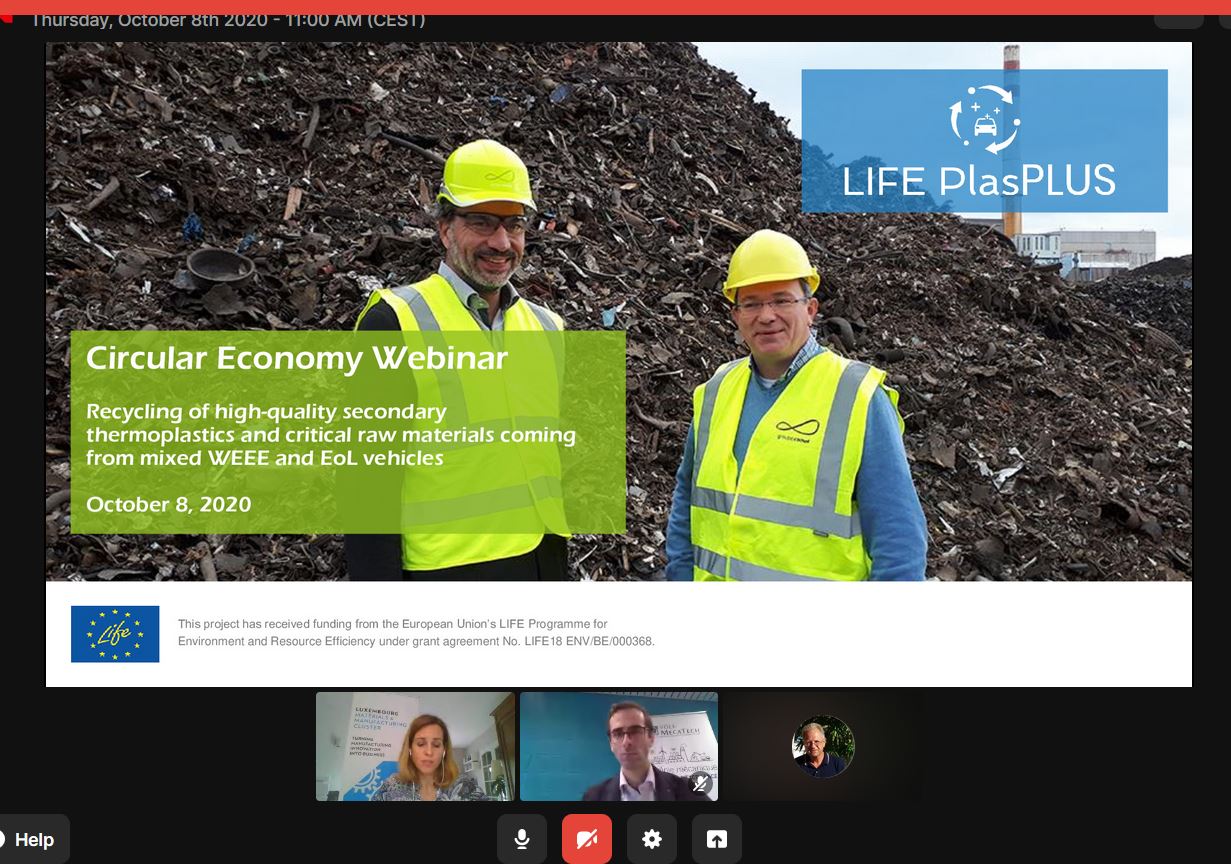08/10/2020
LIFE PlasPLUS at a Recycling & Circular Economy webinar: Only 9% of the plastics are being recovered!
LIFE PlasPLUS presented the concept of recycling with its holistic approach to simultaneously close the loop for two traditionally siloed material value chains, plastics and minerals, by producing high purity recycled thermoplastics and antimony. The presentation was held by Philippe Giaro (University of Liège) during a webinar session: Recycling and Circular Economy that took place on 8 October 2020 in a cross-collaboration between Belgium, Luxembourg and France.
The LIFE PlasPLUS aims to improve the recycling of high-quality secondary thermoplastic and critical raw materials coming from mixed Waste Electrical and Electronic Equipment (WEEE) and End-of-Life Vehicles (ELV). By producing high purity recycled thermoplastics and antimony, these 2 materials in very high demand, notably for the emerging electric mobility sector, LIFE PLasPLUS approach will help these fast-growing sectors to limit energy, water and resource consumption, while cutting gas emissions and recovering critical raw materials at the same time.
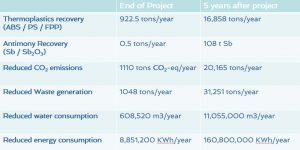
Figure 1. Expected results
Nine billion tons of plastics have been produced since the 1950s and only 9% of the plastic waste ever produced ended up recycled. Electrical and Electronic Equipment and transportation usages accounted for 19 and 29 tons respectively (or 4.3% and 6.6%).
Heterogeneous plastic waste is mostly still either landfilled or incinerated. As a result, Critical Raw Materials (CRM) such as Antimony (Sb), a commonly used Flame Retardant (FR) synergist, are permanently lost. Similarly, high-value thermoplastics (PE, PP, ABS, PS) originating from the automotive and Electrical and Electronic Equipment sectors (EEE) are currently being lost, or in the best cases, downcycled. Decreasing the dependence of these fast-growing sectors on virgin plastic through use of secondary thermoplastics, will curb energy, water and resource consumption and will reduce the adverse impacts of landfilling in Europe.
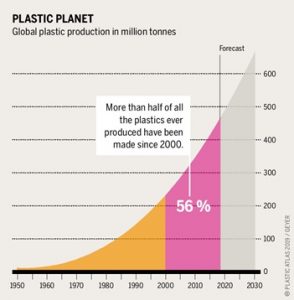
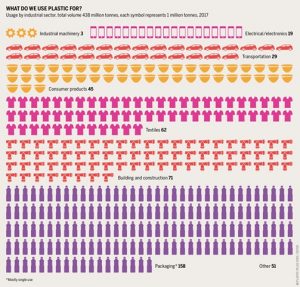
Figure 2. Plastic Metrics
The LIFE PlasPLUS project is being developed under the coordination of Comet Traitements S.A., a Belgian innovative high-growth company processing and recycling shredder residues which are by-products of the shredding of metallic wastes (ELV, WEEE and collected scrap). The project counts four additional Belgian and Italian partners : a university (The University of Liège), FIAT’s research centre (CRF) and two industrial companies operating in active materials and compounding (SERI PLAST and Campine).
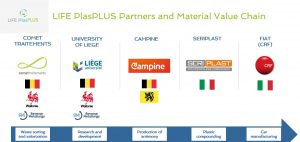
Figure3. LIFE PlasPLUS partners and material value chain
The presentation triggered additional questions from the audience. Participants were very curious about the project separation process of all plastics at the same time within the LIFE PlasPLUS technology, as well as if composites with fiberglass are part of the scope of work.
Innovate together: Promote cross-border collaboration between companies and projects in the Greater Region is a joint event organized by the clusters Materalia (FR), MecaTech (BE), Skywin (BE) and the Luxembourg Materials & Manufacturing Cluster by Luxinnovation (LU). They aim to promote technological collaborations between their members and boost the setting-up of R&D projects involving larges companies, SMEs and RTOs from our respective ecosystems in the Greater Region.
Stay tuned for the next LIFE PlasPLUS events: https://www.lifeplasplus.eu/events/.
